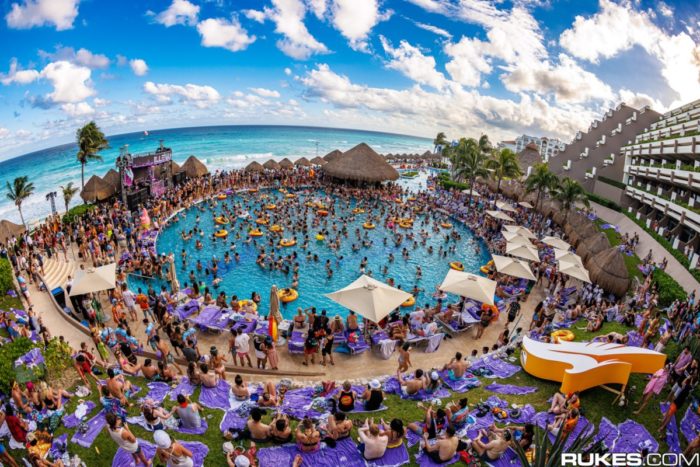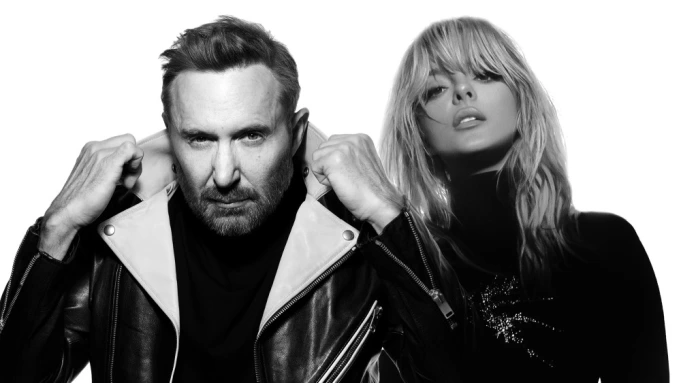
2022 in review: Five key trends in the dance space
From the social reception of non-dance artists’ choice to put out heavily house-influenced LPs to the resurgence of ’90s and early 2000’s sounds, the dance/electronic space was lively and not without surprises during what can be considered its first true post-pandemic year. What remained consistent, though, was the emergence of various trends that went on to characterize this creatively rich year in dance/electronic music. These trends touched just about every corner of this industry, from the sounds that proliferated to event formats to the digital landscape and beyond. Dancing Astronaut’s 2022 year in review trends spotlight is not intended to be a catchall, nor an exhaustive record of each trend that rose to prominence this past year, but rather a focused shortlist of some of the trends that we found most interesting. Look back at the year in dance music with us below.

House Came to the Forefront of Conversations
(Inside and Outside the Dance Space)
Regardless of where dance listeners stand on the Honestly, Nevermind continuum (smash or pass), most were unified in the surprise collectively felt when one of the world’s best-selling acts tried his hand at the genre on an album that engaged elements of house, Baltimore Club, and Jersey Club under the creative tutelage of executive producers Black Coffee and Gordo. Most streamers were still processing Drake‘s divisive dance detour (delivered on June 17, 2022) when Renaissance soulfully descended upon digital streaming platforms on July 29, 2022, rife with dance influence amplified by the assistance of power players like Skrillex, Honey Dijon, and Green Velvet. Lightning struck twice this year in the sense that two of music’s most prominent artists embraced house music in a long-form format that raised the genre’s profile beyond its immediate and established circles. While house aficionados are entitled to their opinions on Drake and Beyoncé‘s respective approaches, the value of Honestly, Nevermind and Renaissance stems from the albums’ ability to put house music in front of a wide net of listeners, some of whom invariably had little to no prior exposure to the genre. In the seasons that have succeeded the release of both LPs, some have opined that Drake and Beyoncé’s adoption of house overshadowed producers dedicated exclusively to the genre today. But by acting as gateways to house music, Honestly, Nevermind and Renaissance have routed some streamers deeper into the house domain, putting them within the orbit of some of these tastemakers (if not driving listeners to them) while placing house music on pop culture’s main stage—even if only for 15 minutes.

Bigroom Techno Boomed
Words by Ross Goldenberg
Though the crossover between bigroom and techno didn’t originate in 2022, the hybrid got what was arguably its most propulsive push forward this year, thanks in large part to Hardwell and Rebels Never Die, Dancing Astronaut‘s 2022 Album of the Year.
Pre-pandemic, artists like Maddix, Will Sparks, and even i_o toyed with this main stage-primed marriage of subgenres. The convergence of their earlier efforts, coupled with the consistency with which the underground has seeped further and further into dance music’s foreground, created the conditions for bigroom-techno to gain an increasing amount of traction in 2022. Building on the foundation laid by these acts while approaching it in his own distinctive way, Hardwell explored bigroom-techno at scale on Rebels Never Die, a welcome maturation of his sound that linked the nostalgic heart of the 2010’s with a new-age, uptempo flair that inspired others to follow in his footsteps as the album came to form between March and September.
Amid dance music’s ever-changing landscape, it’s evident that bigroom-techno will be here to stay moving into 2023, especially with Hardwell—and Revealed Recordings—leading that charge while other bigroom-techno experimenters like Maddix and Will Sparks continue working within the crossover.

Old-School Rave Sounds Swelled as ’90s, Early 2000’s Samples and Interpolations Abounded
2022 was a love letter to the sounds of the ’90s and early 2000’s, as a range of producers, including Kx5 (“Take Me High“) and The Glitch Mob (Ctrl Alt Reality), pulled elements of these past decades into the present, making for contemporary productions with heady nostalgia value. “We were trying to harness the spirit and energy of old-school rave culture, where it was really just about people coming together under one umbrella purely for the music,” The Glitch Mob’s Ed Ma told Dancing Astronaut of the creative process behind Ctrl Alt Reality, an LP conceptually centered on ’90s rave sounds and the sense of community and connection signature to dance events held during that decade.
Whereas artists like the Kx5 and The Glitch Mob channeled the sound and feel of ’90s raves in their respective original material, others either sampled or interpolated from the ’90s and early 2000’s. David Guetta and Bebe Rexha (“I’m Good (Blue),” which interpolates Eiffel 65’s 1998 single, “Blue (Da Ba Dee)”), Dancing Astronaut Artist to Watch in 2023 Azzecca (“I’ve Been Waiting,” which recalls Cassie’s 2006 single, “Me & U”), and even Beyoncé (“Break My Soul,” which samples Robin S’ 1992 “Show Me Love (Stonebridge Club Mix)”) are among the diverse list of producers to do so this past year. And in a testament to just how relevant these time periods were to music in 2022, a brand new festival dedicated to the sounds of the ’90s and 2000’s, Flashback Festival, came to Manchester in May 2022. The festival, billed as “Manchester’s only outdoor festival celebrating the best dance music from the 90s and 2000’s…bringing timeless tunes and fresh vibes to the masses in the city,” will return to Platt Fields Park in the UK on May 20, 2023.

The Destination Festival Became More Than a Fad
In April 2022, the International Music Summit projected dance/electronic festival and club valuation to return to pre-pandemic levels based on Skiddle data demonstrating the demand for dance events to be “bigger than ever.” 2022 would prove to be a barometer of interest for the destination festival format in the dance/electronic space specifically, and over the past year, it became clear that the model isn’t a passing fad. In fact, it’s even possible to see 2022 as the year of the destination festival in dance music, following the second installment of ILLENIUM‘s Ember Shores (December 2-4, Cancún, Mexico) and the debut of RÜFÜS DU SOL‘s Sundream Tulum (held across two weekends, March 3-6 and March 10-13, Tulum), Tiësto‘s The Trip (March 31-April 3, Cancún), Excision’s Paradise Blue (April 29-May 1, Cancún), the Croatia Edition of Kygo‘s existing Palm Tree Music Festival (August 27-September 1, Pag), and Kaskade and deadmau5‘s Sun SoaKed and Friend5 (December 16-18, Cancún).
The appeal of the destination festival, typically hosted on an all-inclusive resort, isn’t elusive: in a saturated dance/electronic events market, such an event extends more creative and curatorial control to the artist launching it, along with a more intimate opportunity for artist-fan connection and the potential for greater financial incentive. Moving into 2023, the destination festival format will likely remain a focal point of dance/electronic calendars, with dates to succeeding iterations of existing events already declared and more likely to be announced. Of note, RÜFÜS DU SOL’s Sundream Baja will take place May 5-8, 2023 at the El Ganzo Sculpture Gardens in San José del Cabo. Meanwhile, Excision’s Paradise Blue will return to Cancún from April 28-30. How audiences respond to the return of existing destination festivals, as well as the introduction of new ones, will ultimately determine whether the dance/electronic destination festival market can support the current proliferation of destination festivals moving forward. But for now, it’s safe to say that artists—and attendees—overwhelmingly gravitated toward the destination festival in 2022.

TikTok’s Impact Was Felt
Yes, we’re talking about TikTok, but not in the way that you might expect. We’re not gesturing to labels and artist teams compelling acts to regularly create content on the platform, nor to TikTok’s contentious royalty system for songs, but rather to the so-called “Tiktokification” of dance events. TikTok first became available in the United States in August 2018, and by October of the same year, downloads of the application had surpassed those for Facebook, Instagram, Snapchat, and even YouTube. Come February 2019, TikTok would reach 1 billion installations on the App Store and Google Play Store, per Tech Crunch. Although the video sharing platform evidently enjoyed popularity well before 2022, this year, TikTok’s social impact on the dance space was felt to its fullest degree yet from a frontend perspective.
In a phenomenon familiar to other genres like pop, where TikTok was similarly influential, the circulation of some artists’ song clips and IDs on the app led to a rare but compelling type of virality that later catalyzed full-fledged releases. Take David Guetta and Bebe Rexha’s “I’m Good (Blue)” as an example. Interestingly, the now-Grammy-nominated single was never intended to mature beyond the demo stage, reports Elite Daily. The demo, recorded in 2017 and later used in Guetta’s set at Ultra Music Festival that same year, unexpectedly caught fire on TikTok, prompting him to do something he’d never intended to: finish it (with Rexha’s help) and put it out. Looking back on 2022, the sleeper hit reigns as the brightest example in the dance space of TikTok’s ability to stimulate unanticipated success.
The role that TikTok played this past year in propelling non-traditional ravers to the live events circuit might not be as obvious as its impact in release circles (nor as easy to quantitatively substantiate), but it was nevertheless felt. The ease with which creators on the platform can upload and share videos that land on the For You pages of app users unfamiliar or loosely familiar with the video’s subject(s) can entice viewers to try a new makeup product, recipe, or in this case, a dance event. As the music industry returned to a state of normalcy in 2022 following years riddled with COVID-19-related event cancellations, content from dance shows and festivals grew on TikTok, driving non-traditional raver interest in these events. The Brooklyn Mirage can be used as a case study for the “Tiktokification” of dance events; after the venue revealed transformative renovations at the start of the 2022 spring/summer season, videos of the site’s new LED screen flooded TikTok. In the comments sections of these videos, curious viewers could be seen tagging their friends and leaving indications of their interest in visiting the Mirage. Although the videos were first and mostly posted by attendees who could be considered traditional ravers (read: those who regularly go to dance events and are familiar with the tacit social etiquette), they appealed to non-traditional ravers, some of whom had never attended a dance event but went and shared their own experiences via TikTok, thus expanding the scale at which this cross-pollination took place. The repetition of this cycle conferred a certain trendiness to attending dance events and capturing them on TikTok. The unusual visibility of Burning Man 2022 on TikTok can be seen as another case study illustrative of this “Tiktokification.”
To be clear, neither social media nor sharing videos from dance events is a concept new to this space, but the rate at which this exposure occurred on TikTok is arguably rare and unprecedented for the scene. Although there have been vehicles across various mediums that have successfully attracted non-traditional ravers to dance events (with the 2015 film We Are Your Friends serving as an example), it feels like none have done so as compellingly as TikTok has.
Featured image: Rutger Geerling
Categories: Features
